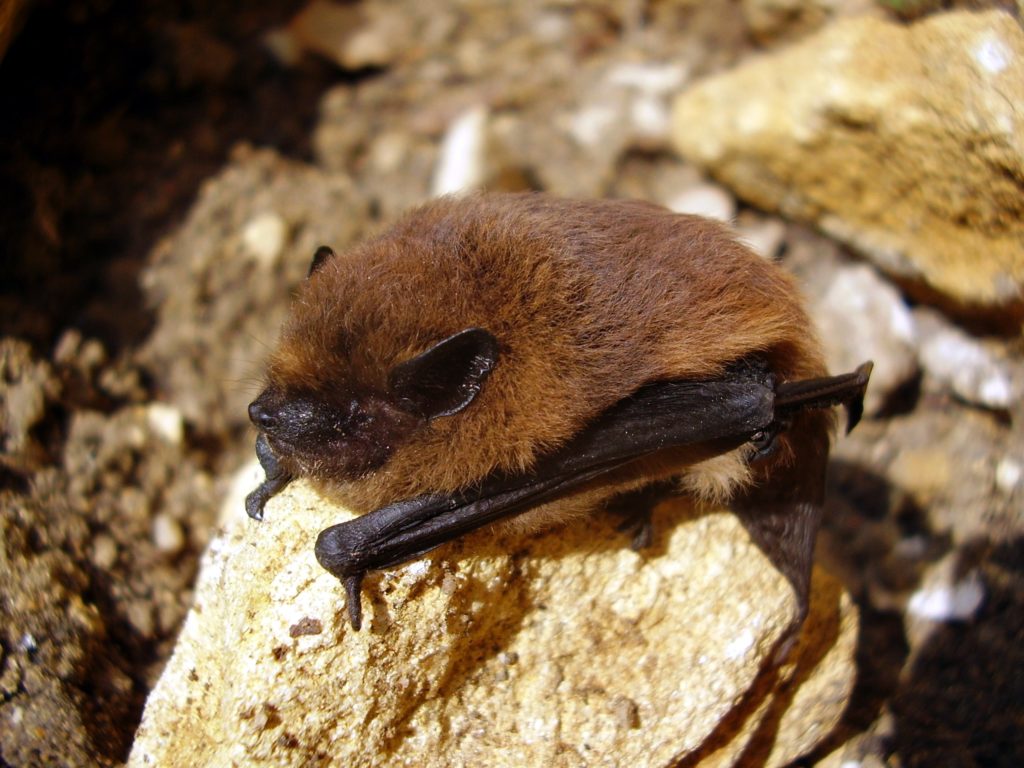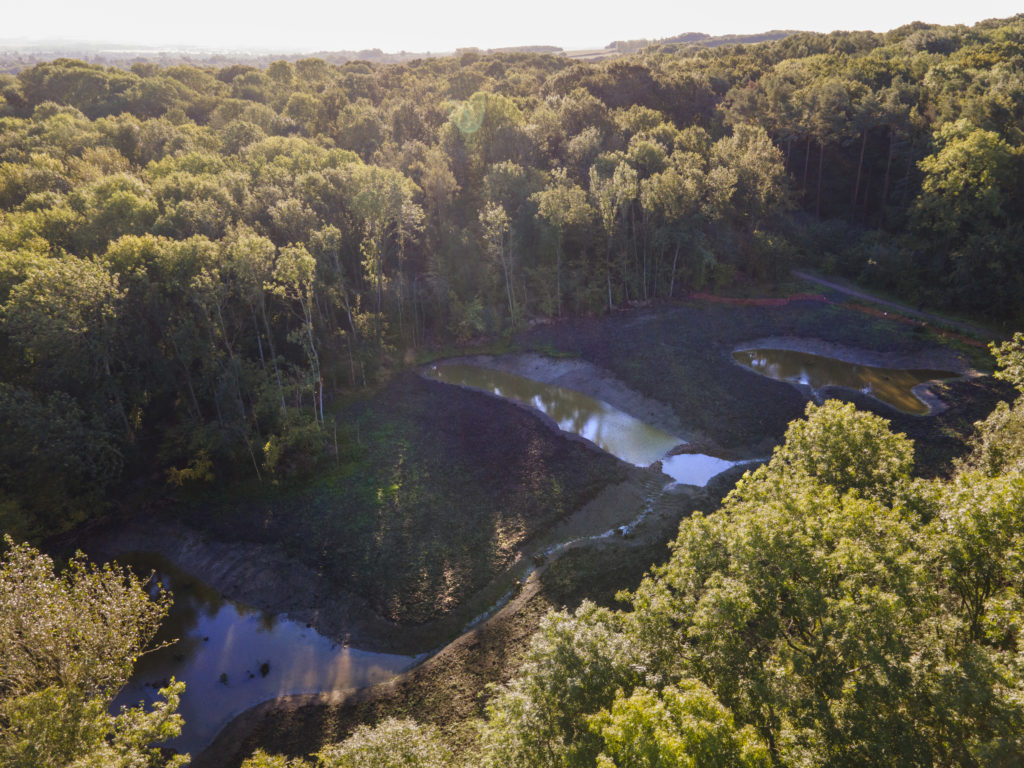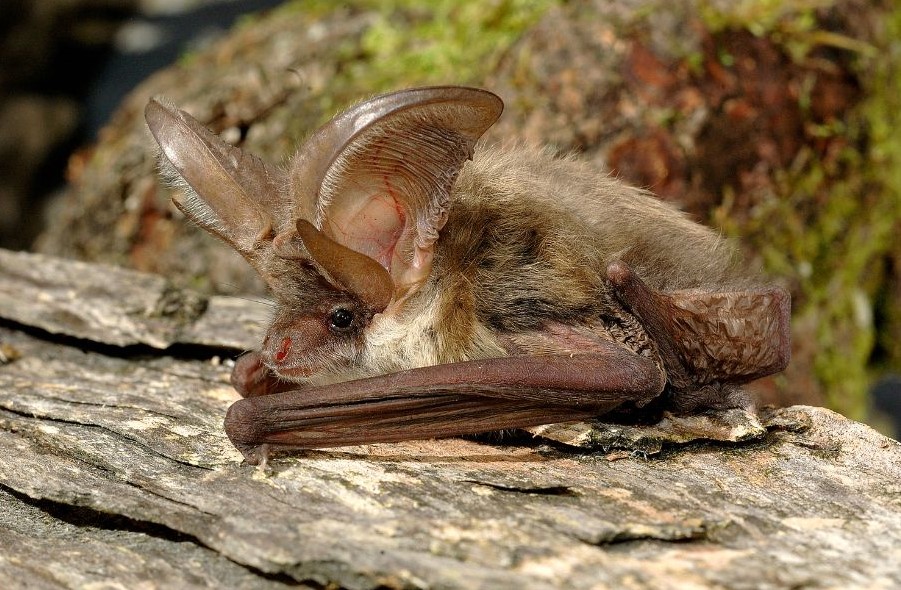Nurturing bat-tastic spaces for nocturnal wildlife
As evening falls over Oxfordshire, the familiar daytime bustle fades, giving way to the mysterious flight of one of Britain’s most misunderstood species: bats. Thanks to Earth Trust’s sustainable land management practices, Little Wittenham Wood is a bat-friendly haven where these night-time creatures are not only thriving but serving as vital indicators of environmental health.
Celebrating the diversity of UK bats
The UK is home to a diverse population of bats, with 18 species known to inhabit our countryside and urban spaces. “Each species is unique, with its own specific habitat preferences,” shares Charley Scales, a ranger with Earth Trust. For instance, Noctule bats prefer the heights of woodland trees, while Daubenton’s bats seek out waterways, roosting under bridges or along riverbanks. Meanwhile, the versatile Pipistrelle adapts to various habitats, from tree hollows to crevices in buildings, and Serotines are often found near old stone buildings like churches.
Bat Fact: Bats are found on every continent except Antartica!

Bats are surprisingly social and exhibit complex behaviours. “They’ll often travel in groups and communicate with each other, which we can pick up on our bat detectors,” says Charley. Each species has its own social structure; some are solitary, while others are highly communal. This diversity reflects just how integrated bats are in our ecosystems.
Why bats matter to our environment
Bats play a crucial role in pest control, especially the tiny Pipistrelle, which can eat up to 3,000 insects in a single night! By keeping insect populations in check, bats contribute to ecosystem balance. But their importance extends beyond pest control; bats are sensitive to environmental changes, making them excellent indicators of ecosystem health. “If bat populations are thriving, it’s a good sign that local habitats are healthy too,” Charley explains.

New pond network created by Earth Trust in 2021
Creating bat-friendly habitats in Little Wittenham Wood
At Little Wittenham Wood, beside the Wittenham Clumps, Earth Trust is dedicated to thoughtful management practices that benefit bats and other wildlife. By preserving older trees with natural crevices and leaving dead wood on the forest floor, we ensure there are ample roosting sites for bats and habitat for the insects they rely on for food.
One major project involved the creation of ponds to support local biodiversity. Originally intended to benefit endangered great crested newts, the ponds have also attracted mosquitoes and midges, providing an abundant food source for local bat populations. To date, seven bat species, including the rare barbastelle, have been documented in the area, a promising sign of our conservation efforts.
Bat facts: Bats are the only flying mammal!
Addressing the challenges facing bats
Bats face numerous threats in the modern world, from habitat loss to light pollution. Development projects often fragment their habitats, disrupting natural roosting and foraging patterns. Light pollution near bat roosts can also interfere with their behaviour and even lead them to abandon established colonies. Additionally, common home improvements can unintentionally harm bats; for example, non-breathable roofing membranes can trap bats, and sticky flytraps or rodent traps can lead to accidental injuries or deaths.
To protect bats, it’s essential to raise awareness about their needs and the simple ways we can mitigate human impacts on their habitats.
Bat facts: Bats are important pollinators, disposing of seeds and nuts which means they play a crucial role in facilitating production of many fruit and vegetables!

How you can help protect bats
Everyone can contribute to bat conservation by making small changes in their outdoor spaces. Charley suggests a few simple actions to make your garden more bat-friendly:
Plant night-scented flowers
Flowers like jasmine, honeysuckle, and marjoram attract nocturnal insects, providing food for bats.
Create a garden pond
Small ponds are invaluable, supporting not only bats but frogs, toads, and newts.
Reduce light pollution
Try minimising outdoor lighting or using bat-friendly lighting options.
Install a bat box
Bat boxes provide safe roosting sites, especially in areas where natural hollows are scarce. If you don’t have space for one, you can sponsor one in Earth Trust’s woodland.
Avoid using sticky traps
Steer clear of sticky fly traps or exposed rat traps that might harm bats
When to spot bats and get involved
If you’d like to observe bats in their natural habitat, Charley suggests that May to September are ideal months. “Once the weather warms up, the activity really picks up,” she explains. Watching bats swoop and dive through the air at dusk is an incredible reminder of their importance in our ecosystem.
Earth Trust’s commitment to bat conservation at Little Wittenham Wood is just part of our broader mission to enrich the green spaces in our care for the benefit of both people and nature. By supporting Earth Trust, you can help to preserve not just the bat population but all the biodiversity of Oxfordshire’s green landscapes. From donations to volunteering, your support can make a real difference in the lives of these fascinating creatures.
As the day fades into night over the rolling hills of Oxfordshire, remember that this world belongs to more than just us. It’s also the domain of the bats – guardians of the night and health indicators of our natural world. With your help, we can keep these nocturnal creatures thriving in our shared environment.
And if you’re lucky enough to spot one on a warm summer’s evening, Charley has a favourite to look out for: “The brown long-eared bat. Its huge ears make it look especially charming.”

Thank you to our young volunteer, Justin, for his support with research for this story. You can find out more about our Youth Volunteering programme here.
Elsewhere at Earth Trust…
-
Non-Executive Director – Earth Trust Experiences Ltd
We are seeking two Non-Executive Directors to provide strategic oversight and governance as we develop high-quality visitor experiences and commercial operations. -
Trustee
Earth Trust is seeking up to three Trustees to guide our growth and impact, helping us inspire action for the environment and create a welcoming Gateway to the natural world. -
Fields full of life – nature and food working together
Earth Trust is making big changes in two of its fields to show how nature and food can thrive together.